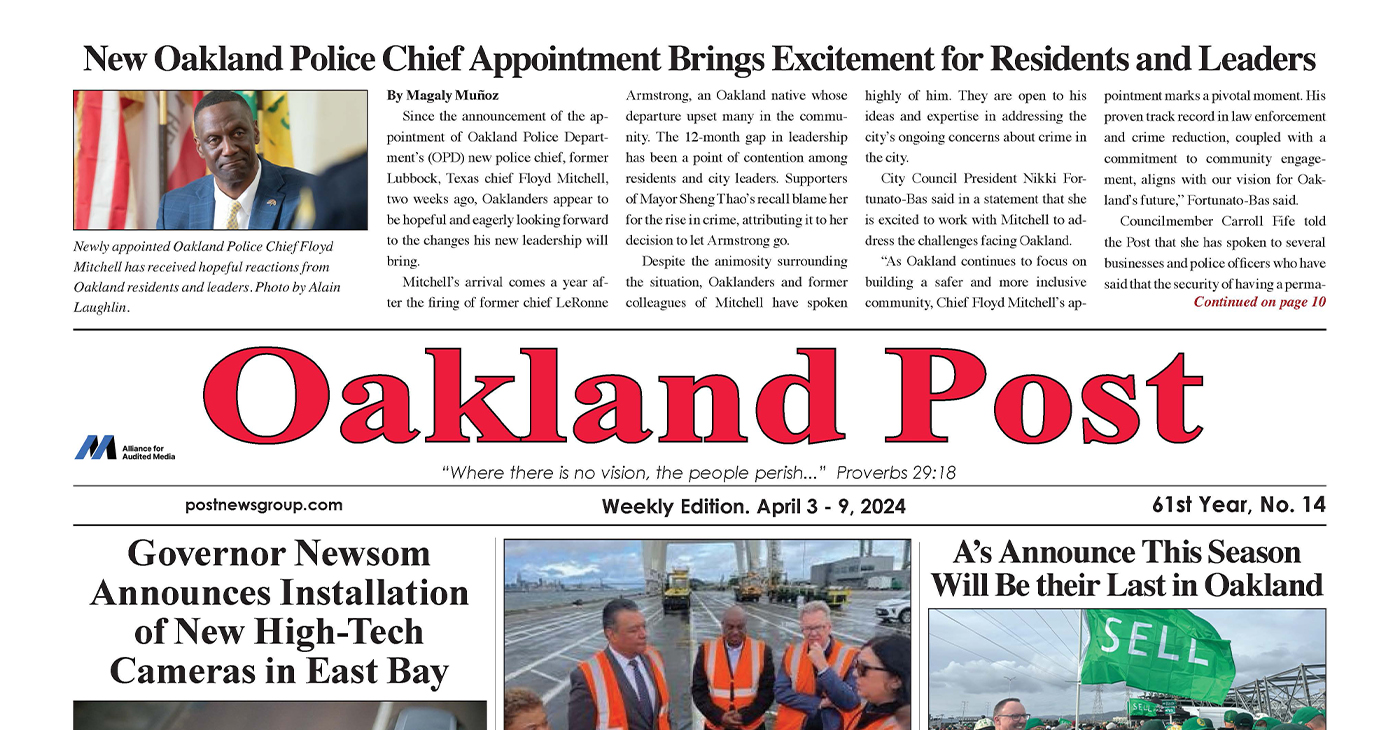Crime
Overtime Pay Drives Some Police Officer Salaries to Over $300,000 a Year

Highest paid officer earned $157,000 in overtime, bringing salary to $463,000
Despite promises to reduce costs, Oakland Police Department overtime is projected to cost the city nearly $30 million this year, $17.5 million or 58 percent more than the city’s budget allows.
In a staff report that went to council committees this week, city staff argues contradictorily that the police department is taking steps to rein in excessive overtime and also that there is not much that can be done about costs if the city wishes to maintain police services and fulfill its legal and contractual obligations.
“The key drivers of overtime expenditures … are service levels, Memorandum of Understanding (MOU) requirements and legal mandates… Proposed strategies are likely insufficient to reduce overtime spending to budgeted levels,” the report said.
However, a look at police overtime in 2016, the most recent year available, reveals that the city paid out significant amounts of overtime inflating a number of officers’ salaries.
According to the website Transparent California, 18 officers earned over $300,000 annual salary, based on regular salary, benefits and more than $100,000 in overtime.
The highest paid officer, Malcolm Miller, received $111,932.77 regular pay. His overtime reached $156,667.61, bringing his total pay and benefits to $463,215.04.
Officer Huy Nguyen earned $112,455.80 regular pay plus $183,568.88 in overtime. His total salary and benefits came to $391,766.13
Lt. (now Captain) Roland Holmgren earned a total of $385,172.51, including $145,186 regular pay and $106,552.61 overtime.
Lt. Chris Mufarreh earned $384,507.55, including $150,665.43 regular pay and $122,993.67 in overtime.
Sgt. Fredrick William Shavies earned $381,530.21, which included $127,935.72 regular pay and $122.457.34 overtime.
A chart in the report shows that the only time the cost of overtime decreased in last 10 years was during the administration of Mayor Ron Dellums in 2009-2010 and 2010-2011, when the cost of overtime declined by nearly 50 percent and came in close to budget.
A present, OPD has 792 budgeted positions and 50 sworn officer vacancies. The projected saving from the vacancies – $9 million – could be utilized to offset some overtime costs.
OPD has a total of 285 officers assigned to patrol, including 240 officers assigned to 35 patrol beats providing 24 hours-a-day coverage.
While the report may suggest nothing much can be done about overtime, the reality is that the city can modify the contract police union when a new agreement is negotiated next year, said Rashidah Grinage of the Coalition for Police Accountability.
“If it’s in their contract, the contract can be changed. Otherwise, you’re locked in,” she said.
“The city has the power to make changes, but they just keep buckling,” she said. “It’s a pretty different posture than they have with city workers in SEIU.”
The overtime issue raises many questions, Grinage continued.
Why doesn’t the city adopt a budget that reflects real overtime costs?
Why doesn’t the city administration monitor overtime expenses and make sure OPD stays within budget?
Which officers receive the lion share of overtime perks?
Where do the funds come from to cover these unbudgeted expenses?
During the Dellums administration, the cost of overtime was drastically reduced.
Dellums and his police chief, Wayne Tucker – who were both older and near the end of their careers – were willing to take on the powerful police union. They took the OPOA to arbitration and won cost-saving changes in the way officers were scheduled for duty.
“They could do the right thing, so they stood up to the union without fearing for their careers. Grinage said. “They were interested in making a difference, and they did.”
California Black Media
Commentary: Finding the Right Balance — Addressing Organized Retail Theft While Upholding Civil Liberties
Organized retail theft is a significant issue that impacts both consumers and businesses. While it is crucial to address theft and protect businesses from losses, we should also be mindful of safeguarding individuals’ constitutional rights, particularly the right to due process. AB 1990 by Assemblymember Wendy Carrillo, also known as the STOP Act, raises concerns about the balance between addressing theft effectively and ensuring civil liberties are upheld.

By Assemblymember Tina McKinnor | Special to California Black Media Partners
Organized retail theft is a significant issue that impacts both consumers and businesses. While it is crucial to address theft and protect businesses from losses, we should also be mindful of safeguarding individuals’ constitutional rights, particularly the right to due process.
AB 1990 by Assemblymember Wendy Carrillo, also known as the STOP Act, raises concerns about the balance between addressing theft effectively and ensuring civil liberties are upheld. This bill allows law enforcement officers to make warrantless arrests for shoplifting offenses not witnessed by the officer, as long as there is reasonable cause to believe the individual committed the crime. This bill has a dangerous potential for overreach and infringes on civil liberties, particularly the right to due process.
While the stated intention behind the STOP Act is to combat organized retail theft and protect businesses, there are valid concerns that this bill is an overreach and that existing law works, if properly enforced by our partners in law enforcement. A petty theft involving property stolen valued at $950 or less may be charged as a felony or misdemeanor (called a wobbler) if the offender has the following prior convictions: 1) at least on prior petty or theft-related conviction for which a term of imprisonment was served, and 2) a prior conviction for a serious or violent offense, for any registerable sex offense, or for embezzlement from a dependent adult or anyone over the age of 65. A misdemeanor can result in a sentence of up to one year in jail, whereas a felon can mean incarceration for 16 months, two years or three years. Let’s look at shoplifting in California. It occurs when a suspect enters a store, while that establishment is open, intending to steal property worth less than $950. The crime is considered a misdemeanor, punishable by up to six months in the county jail.
Granting officers the authority to arrest individuals based on reasonable cause, without witnessing the crime firsthand, can lead to negative consequences and possible violations of individual rights. Probable cause is the legal standard by which police authorities have reason to obtain a warrant for the arrest of a suspected criminal and for the courts to issue a search warrant. A grand jury uses the probable cause standard to determine whether or not to issue a criminal indictment. The principle behind the probable cause standard is to limit the power of authorities to conduct unlawful search and seizure of a person or its property, and to promote formal, forensic procedures for gathering lawful evidence for the prosecution of the arrested criminal. Reasonable cause does not require any of this due process and only requires that an officer reasonably believes that a crime has been committed. It is essential to find a middle ground that effectively addresses organized retail theft without compromising the fundamental rights of individuals.
California’s current laws, including the use of witness statements and surveillance evidence are sufficient for addressing suspected shoplifting and organized retail theft. California Attorney General Rob Bonta recently prosecuted Michelle Mack, a suspected organized smash and grab ringleader who paid twelve women to travel around California and commit over $8 million in retail theft at 21 different stores. AG Bonta used California’s current laws to have the suspect arrested and brought to justice.
The State of California is also making significant investments to address retail theft. Just this past year California invested an additional $267 million to combat organized retail theft. It has been less than a year and our law enforcement partners should have the opportunity to address this recent spike in retail theft crime.
Los Angeles County recently applied for and received a grant for the State of California for $15.6 million dollars to address retail theft enforcement. LA District Attorney George Gascon also recently formed an organized retail task force that partners with LA County Sheriff’s Department, Glendale, Beverly Hills, Burbank, Torrance and Santa Monica Police Departments to integrate their response to retail theft across the region. These collaborative efforts, such as those seen in initiatives like the organized retail task force in LA County, demonstrate the importance of a united approach to tackling theft while maintaining a balance between enforcement and civil liberties.
As we move forward, it is essential for policymakers, law enforcement agencies, businesses and communities to work together in finding solutions that effectively address organized retail theft without encroaching on individual rights. Ongoing evaluation and a commitment to thoughtful consideration will be crucial in navigating this challenge and fostering a safe and prosperous environment for all. Balancing the scales of justice to protect businesses while upholding civil liberties demands a comprehensive and conscientious approach from all stakeholders involved.
I am confident we can find that balance.
About the Author
Assemblymember Tina McKinnor (D-Inglewood) represents the 61st District in Los Angeles County, which includes parts of the South Bay, Inglewood, Hawthorne and Lawndale.
Activism
Oakland Post: Week of April 10 – 16, 2024
The printed Weekly Edition of the Oakland Post: Week of April 10 – 16, 2024

To enlarge your view of this issue, use the slider, magnifying glass icon or full page icon in the lower right corner of the browser window. ![]()
Activism
Oakland Post: Week of April 3 – 6, 2024
The printed Weekly Edition of the Oakland Post: Week of April 3 – 6, 2024

To enlarge your view of this issue, use the slider, magnifying glass icon or full page icon in the lower right corner of the browser window. ![]()
-

 Activism4 weeks ago
Activism4 weeks agoOakland Post: Week of March 20 – 26, 2024
-

 #NNPA BlackPress3 weeks ago
#NNPA BlackPress3 weeks agoCOMMENTARY: D.C. Crime Bill Fails to Address Root Causes of Violence and Incarceration
-

 #NNPA BlackPress3 weeks ago
#NNPA BlackPress3 weeks agoMayor, City Council President React to May 31 Closing of Birmingham-Southern College
-

 #NNPA BlackPress3 weeks ago
#NNPA BlackPress3 weeks agoFrom Raids to Revelations: The Dark Turn in Sean ‘Diddy’ Combs’ Saga
-

 #NNPA BlackPress3 weeks ago
#NNPA BlackPress3 weeks agoCOMMENTARY: Lady Day and The Lights!
-

 #NNPA BlackPress3 weeks ago
#NNPA BlackPress3 weeks agoBaltimore Key Bridge Catastrophe: A City’s Heartbreak and a Nation’s Alarm
-

 #NNPA BlackPress3 weeks ago
#NNPA BlackPress3 weeks agoBaltimore’s Key Bridge Struck by Ship, Collapses into Water
-

 Activism3 weeks ago
Activism3 weeks agoOakland Post: Week of March 27 – April 2, 2024















































